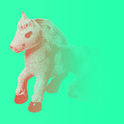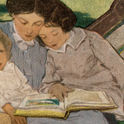Under lockdown, we have witnessed something of a renaissance in food pictures: social media users bored, quarantined and furloughed, are proudly uploading pictures of gooey, oozing cakes and crisp, bubbly sourdough; extravagant sandwiches dripping gorgeous sauce from under the crusts.
But it is an under-acknowledged fact that on the internet, posting pictures of your food is actually quite a dangerous game. I don’t just mean that it can sometimes be tedious—other users finding it a bit boring, like when people tell you about their dreams (along with the glut of lockdown sourdoughs has come a glut of people complaining about all the sourdoughs). The real horror is that if you post a picture of some food gone wrong—like, really wrong—you may never be able to live it down.
Consider something like this rather sad-looking cream cheese bagel, posted this week by American political consultant Jordan Uhl with the caption: "who says [Washington] dc doesn't have good bagels. I'd like to see nyc top THIS!!!!!" To the say the bagel is underwhelming would be an understatement; the picture went viral with over 11.7k likes. Uhl's picture straddles that internet space where a reader may not think it's a joke—we can just about imagine a terrible guy in Washington thinking this is a decent bagel. Or we could simply gaze in awe at how terrible it is.
https://twitter.com/JordanUhl/status/1264633959473872899?s=20
But sometimes bad pictures of food are clearly coming from a place that is 100 per cent sincere. Years ago, I remember seeing a “47p vegan lunch,” an image originally tweeted (and since deleted) by an account called @VeganRevolution, which depicted what can only be described as some beans on toast with cucumber on it, smugly captioned with: “£0.47p. That’s the cost of my Vegan lunch. But apparently that’s too expensive for people addicted to cheese & meat.” And earlier this year, my Twitter timeline graced me with a picture of a single hulking slab of what looks like boiled or perhaps microwaved steak, pale and grey with a weird crust round one of its sides like some horrible pie.
On Twitter accounts such as "Rate My Plate," users occasionally stray into this sort of terrain—although no image I’ve yet seen on that account has been seared into my brain in quite the same way. Meanwhile, "food porn" viral videos often seem to trade off a deliberate, professionalised version of the same strangeness: giant pools of cheese poured into hollowed-out burger patties and so forth.
What makes the amateur images so compelling is that they are not merely bad: people, after all, screw up meals in perfectly non-notable ways every day (indeed, there has even been a mini-trend under lockdown of celebrities displaying their incompetence with cooking, almost as a boast). They are also capable of photographing otherwise very good meals in ways which make them look unappealing. What distinguishes this particular category of bad food pictures is that they are bad in a way that has become uncanny—in precisely the same way that the “uncanny valley” is uncanny. Dolls or robots exhibiting the uncanny valley effect are unsettling because they get being a human being wrong. And these uncanny food pictures manage to achieve something very similar: they depict food stretching the bounds of sense, food that has gone wrong. Food that misses, somehow, the mark of really being food in ways we would not previously have thought possible.
And this, I think, is why it will never be possible for someone who has posted a truly uncanny food picture to live it down. The internet erects all sorts of barriers between us—without someone’s face, voice, and physical presence, we can misinterpret the actions of others in all sorts of ways. This contributes to a general sense of mutual hostility, or leads people to dismiss anyone who disagrees with them as a bot. The people we encounter online really could be getting up to anything—indeed, in ways that might fundamentally separate them from you. There is no being invited into their home, no breaking of bread. The uncanny food picture serves to confirm it. You don't know what they do in their kitchen, what they think is normal. In the incriminating photograph, a social media veil has slipped: behind it is a single exposed poster—going, in their eating habits, completely off-piste.
For all this however, the uncanny food picture must also represent a warning. In the moment before they posted their picture, few of these uncanny food-posters were seemingly anything other than proud of the food they had prepared. Before they posted their picture, they had no idea that anything with it was at all wrong. How could they have known—as the products of an increasingly atomised world, who could they have relied on to correct them? So, by the same token, how might we be assured that nothing like this will ever happen to us? Quarantined and alone in lockdown, your sourdough could somehow turn out to be another boiled steak; your banana bread could in time become scattered with horrible, thick chunks of completely incongruous cucumber.
Behind that fallen social media veil we must also recognise a shared humanity: no matter how atomised we become, we are all potentially fellow-sufferers in the art of oversharing to an all-seeing public—with little to shield us when its judgment curdles into disgust. Perhaps in this sense, posting an uncanny food picture could also be a powerful pre-emptive defence. Behold my wretchedness, the picture says of its creator, in all its over-cooked, deliberately bland, dissatisfying glory; I have already exposed all the ways in which I am bad.













